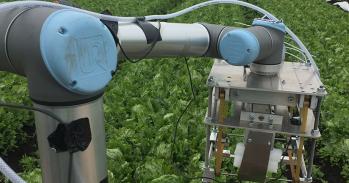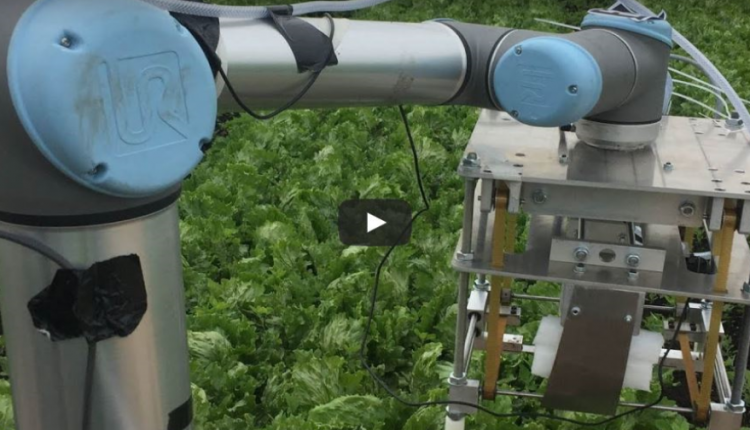Iceberg lettuce is difficult to harvest mechanically. The most cultivated lettuce in the UK, it’s easily damaged and grows relatively flat to the ground, making it a challenge for robotic harvesters. Sturdier crops like potatoes and wheat have been harvested mechanically at scale for decades.
Now the University of Cambridge’s Vegebot, trained first to recognize and harvest iceberg lettuce in a lab setting, has been successfully tested in a variety of field conditions. Although the prototype is nowhere near as fast or efficient as a human worker, it demonstrates how the use of robotics in agriculture might be expanded.
“Every field is different, every lettuce is different,” said co-author Simon Birrell from Cambridge’s Department of Engineering. “But if we can make a robotic harvester work with iceberg lettuce, we could also make it work with many other crops.”
The Vegebot first identifies the target crop within its field of vision, then determines whether particular lettuce is healthy and ready to be harvested. Finally, it cuts the lettuce from the rest of the plant without crushing it so it’s supermarket ready.
“For a human, the entire process takes a couple of seconds, but it’s a really challenging problem for a robot,” said co-author Josie Hughes.
The Vegebot has two main components: a computer vision system and a cutting system. The overhead camera on the Vegebot takes an image of the lettuce field and identifies all the lettuces in the image, and then for each lettuce, classifies whether it should be harvested or not. Lettuce might be rejected because it’s not yet mature, or it might have a disease that could spread to other lettuces in the harvest.
The researchers developed and trained a machine learning algorithm on example images of lettuces. Once the Vegebot could recognize healthy lettuces in the lab, it was then trained in the field, in a variety of weather conditions, on thousands of real lettuces.

(Image Credit: University of Cambridge)
A second camera on the Vegebot is positioned near the cutting blade and helps ensure a smooth cut. The researchers were also able to adjust the pressure in the robot’s gripping arm so that it held the lettuce firmly without crushing it. The force of the grip can be adjusted for other above-ground crops.
In the future, robotic harvesters could help address problems with labor shortages in agriculture, and could also help reduce food waste. At the moment, each field is typically harvested once, and any unripe vegetables or fruits are discarded. Potential robotic agri-tech applications include training a harvester to pick only ripe vegetables. Since they can harvest around the clock, robotic harvesters could perform multiple passes on the same field, returning to harvest previously unripe vegetables. But in the meantime, the Vegebot will have to pick up the pace before it can compete with humans.
Credit: University of Cambridge

